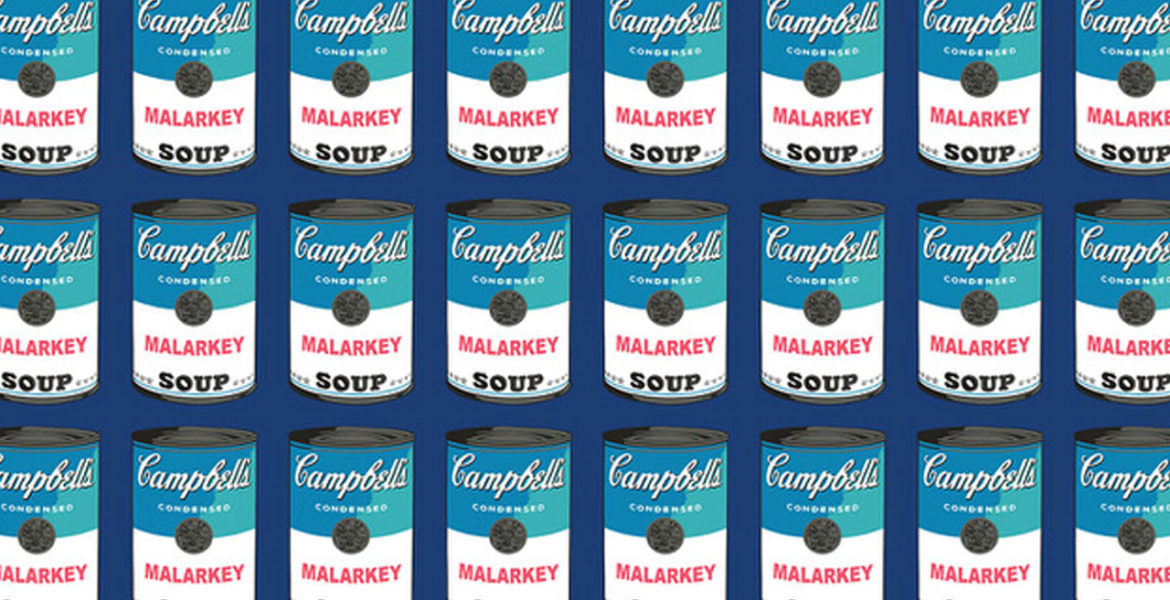Whether you’re a soup or a presidential nominee, the same principles of branding apply. It doesn’t matter if you have tender juicy beef chunks or concrete plans to eliminate the wage gap, your audience will only choose you if they KNOW you.
How do you get people to know you? Three things: money, time, and a compelling message. Your levels of sincerity, conviction, and potassium don’t account for much. (Sorry fictional soup/Yang Gang.)
What insights can be learned from the 2020 election season so far?
#1 Big Media Spends Make for Big Awareness Fast
Having worked on GEICO, whose commitment to awareness brought them from obscurity to the #2 auto insurer in the country, I’ve seen first-hand how a big media budget can work wonders. And former NYC mayor Michael Bloomberg’s entry into the race certainly speaks to that.
Bloomberg spent $410 million on TV ads in just four months. Yowza. And though that’s not quite GEICO levels — who spend an industry-leading $1.5 billion a year — it’s more than Hillary Clinton and President Trump spent on television ads during their entire 2016 presidential campaigns. Combined.
And that’s why Bloomberg won every single delegate in the country. JK. That’s not how
awareness works. Awareness leads to people thinking of you—aka, consideration. But look at it like this, if you’re a new brand with a new product and you just found out you’re in the top five of your buyer’s consideration sets, across America, without even being on shelves (i.e. debate stage, stay with me here) for the first four months, you’d be doing your best KPI dance.
That Bloomberg didn’t ultimately win is explained by an adage by Doyle Dane Berbach (DDB), “Great advertising can make a bad product fail faster.” When national voters tried out Bloomberg for the first time (probably with dismay as he was being skewered on the debate stage by Elizabeth Warren), they looked elsewhere.
#2 Consistent Branding Provides Long-term Value
It’s a cliché at this point: Joe Biden was “brought back from the dead” after 3 straight losses in Iowa, New Hampshire, and Nevada, as well as a year of subpar debates. (If you’ve watched Biden anytime in the last year, you’ve probably experienced that holding-your breath-as-you-hope-the-man- finishes-his-thought feeling.) But it hasn’t mattered.
People know the uncle-in-chief and his “regular Joe” persona. They’ve seen him for 40 years. They trust him. They’ve seen him work alongside Obama for two terms, another man they trust. In other words, the Biden brand is strong, and for those in the country that haven’t been paying super close attention, the Biden brand is a familiar, safe choice. Most tellingly, Biden picked up states where he didn’t spend a single penny, just through sheer household awareness built over time.
#3 To Build a Broad Audience, You Need to be Inclusive
Most brands aspire to be inclusive but few really make the effort to reach all people. Honey Maid redefined what it means to be wholesome years ago, and Nike has proven time and time again that anyone can be an athlete. Both brands have thrived because of their inclusivity.
And though Warren dropping out (as well as Booker, Klobuchar, Harris, Yang, etc.) suggests there is much work to be done in terms of Americans’ perceptions of who is “electable,” an inclusive message still matters.
Trump, who constantly plays to his rabid base, has never bested a 49% approval rating. Bernie, who heavily courts millennials, was shown the limits of his strategy on Super Tuesdays I and II.
But Biden, despite his muddled messaging and weaker ground game, has a crucial co-brand with Obama and appeal to his coalition: men, women, rich, poor, black, white, urban, suburban, educated, un-educated, you name it. In Virginia, turnout was 70% more than in 2016 and broke the previous Democratic record set in 2008, when Barack Obama was on the ballot. Though Bernie’s entire campaign strategy hinges on exciting and turning out new voters, Joe has done it instead.
…
In just 10 days, Joe Biden went from Late Night talk show fodder to the presumptive nominee of the Democratic party. His surge might seem totally out of left field for us 24/7 news cycle-following, podcast-binging, Twittersphere inhabitants, but given how things work in the marketing world, it makes a lot of sense. Once the competition exhausted their resources and exited their respective social media echo chambers, the greater marketplace was there for a steady, solid brand to reap the rewards. Biden may not be the flashiest soup in the pantry, but if he somehow became one, people would definitely know what they were getting. Something solid, trustworthy, and with 0% malarkey.

